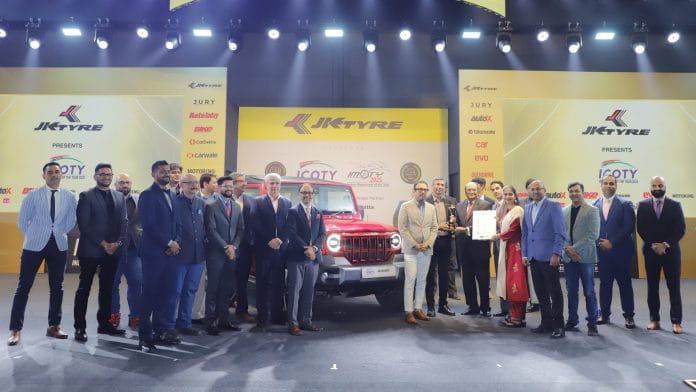The Mahindra Thar Roxx wins the Indian Car of the Year—ICOTY—2025 in the closest result in the award’s history.
That was close—very close. Just two points separated the winner, and as I explain the complexity of the ICOTY scoring process, you might understand why. The Mahindra Thar Roxx secured the big prize in the Indian automotive industry, the ICOTY for 2025, coinciding with the twentieth anniversary of the awards.
This is the second time in a few years that the Mumbai-based manufacturer has claimed this prestigious honour, with the XUV700 winning the 2022 award. However, the Thar Roxx just edged past the Maruti Suzuki Dzire by two points, 139 to 137. As a five-time jury member, this result validated, for me at least, the fairness of our scoring system and demonstrated that not everyone is obsessed with the SUV-ification of the passenger car market. This was the closest two contenders have ever been in the standings, remarkable given that this year had the largest jury in ICOTY’s history.
The Thar Roxx is an excellent vehicle. When I drove it through the backwaters of central Kerala in August, it stood out as a superlative piece of engineering, symbolising how far Mahindra has come as a car manufacturer. That said, it was another couple of Mahindra products—the BE6 and XEV9e electric SUVs—that truly impressed me later in the year. However, since deliveries have not yet started, these models were ineligible for this year’s award but will be strong contenders for next year.
That’s not to say the Maruti Suzuki Dzire was deficient in any way. As the closeness of the result shows, this latest iteration of the compact sedan is an exceptional car. In fact, I’m driving one right now, and it is both fun and economical. While some might dismiss it as just a “taxi,” it offers much more—affordable and reliable mobility for families. However, with nearly two out of every three passenger vehicles sold in India last year being SUVs, perhaps the Roxx’s victory was inevitable—or maybe it wasn’t.
Also read: Five-door Mahindra Thar ROXX is big, comfortable SUV. Just don’t throw it into corners
ICOTY 2025 scoring system
This brings us to the ICOTY scoring system. As every Indian knows, no voting system is perfect. However, the ICOTY jury, consisting of 21 members, employs a unique scoring method. Each jury member is allocated 25 points to distribute among five of the eight shortlisted contenders. Members must select a clear winner but cannot assign more than 10 points to a single contender. This ensures balanced scoring and prevents an individual jury member from disproportionately favouring one vehicle.
This year, the maximum points any contender could receive was 210. Based on my experience, the diversity of opinions—some jurors prefer SUVs, while others favor hatchbacks or sedans—adds richness to the scoring process. The closeness of the result this year reflects the varied perspectives within the jury. Importantly, each juror submits their scoresheets to a representative from Deloitte India, who tallies and keeps the final scores confidential until awards night.
The other two ICOTY categories—Green Car of the Year and Premium Car of the Year—went to the MG Windsor.EV and the new Mercedes-Benz E-Class, respectively. These victories were far more decisive, as both vehicles clearly stood out in their categories. As for the Indian Motorcycle of the Year (IMOTY)—a jury I am not part of—the award went to the Aprilia RS457.
ICOTY is a significant award, and I take my role as a jury member very seriously. The ICOTY logo is prominently displayed on rear windshields and advertising materials, and winning vehicles often experience an uptick in inquiries and sales. Over the past decade, every winning car has become a best-seller.
Of course, your opinion about ICOTY may differ from ours, especially if your preferred vehicle didn’t win or if you felt another contender was more deserving. However, with a combined 408 years of automotive journalism experience among the jury, I’d argue we know what we’re doing.
The ICOTY 2025 jury was chaired by Dhruv Behl and included Yogendra Pratap, Dipayan Dutta, Ishan Raghava, Aspi Bhatena, Joshua Varghese, Sirish Chandran, Aatish Mishra, Pablo Chaterji, Kartik Ware, Kranti Sambhav, Rohit Paradkar, Vikrant Singh, Sagar Bhanushali, Arpit Mahendra, Ameya Dandekar, Abhay Verma, Cyrus Dhabhar, Ashish Masih, Bob Rupani, and, of course, yours truly.
I’m already looking forward to next year’s awards, especially to see if an electric vehicle finally wins the big prize. There are some very exciting contenders on the horizon.
@kushanmitra is an automotive journalist based in New Delhi. Views are personal.
(Edited by Prashant)






